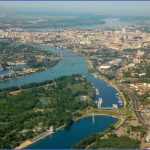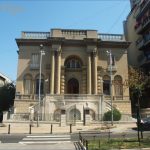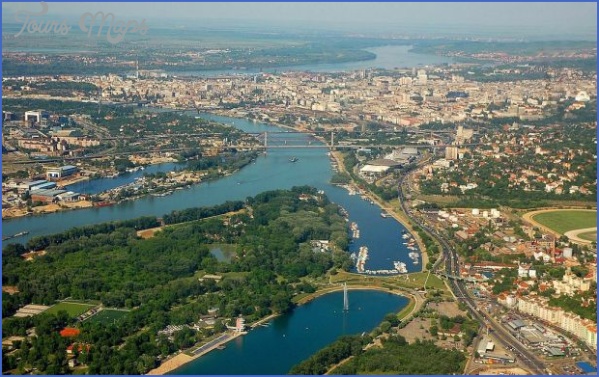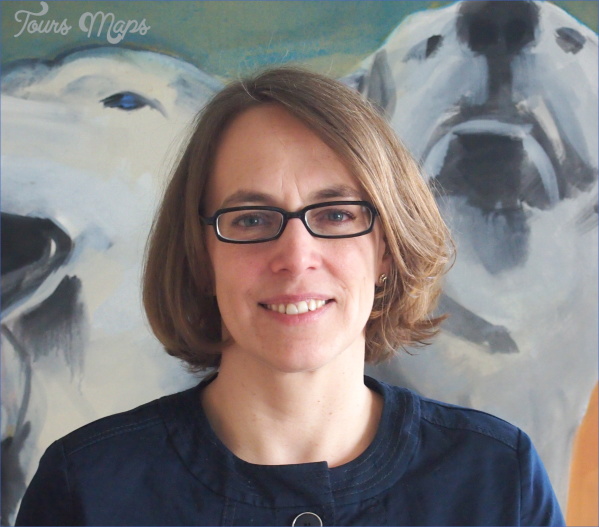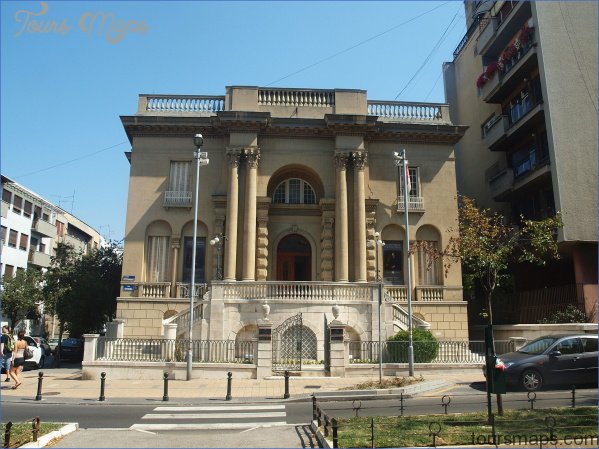MARINKOVIC MUSEUM
Novi Becej is in the Vojvodina region of Serbia, some 120 km north of Belgrade. Just outside it, in the pleasant village of Vranjevo, the composer Josif Marinkovic was born, in 1851. The town, once a trading centre for wheat, has now grown (its population is around 60,000) and Marinkovic’s birthplace lies within its boundaries in an area formerly lived in by the richer merchants of the town and now a fairly modest suburb. The actual house of his birth no longer stands, but the building in its place, in a street called ulica Josifa Marinkovica, bears a plaque to the composer.
There are two churches, Catholic and Orthodox, in that street, and close to the former is a large school, the Osnovna Skola ‘Josif Marinkovic’. In it is a room, also used as an office by the headmaster, that serves to commemorate Marinkovic. One of the leading Serbian composers of the late Romantic era, Marinkovic spent his childhood and part of his youth in Novi Becej, where he organized an amateur choir when he was 15, but he spent most of his life in Belgrade, as choral conductor and teacher as well as composer. He died there in 1931.
The material stored and exhibited, which was presented to the school by Marinkovic’s grandson, is substantial, and the ultimate intention is to create a new museum, adjoining the school grounds and close by the site of the birthplace, to show it more fully and to serve as a centre for local musical life. In the meantime, there is plenty to see in the existing memorial room. There are documents about Marinkovic’s birth and his life, with photographs, letters, his passport, and his certificate of membership of the Serbian Academy of Arts; there are newspaper articles, original manuscripts of his songs, and editions of his works – all clearly arranged and exhibited, some of the material in framed display boards. There is a set of scrapbooks and photo albums that the visitor can leaf through, as well as portraits and a portrait relief.
When the new premises are ready, these will be joined by Marinkovic’s own harmonium, which is owned by Novi Becej and at present housed in the town’s cultural centre. Novi Becej celebrates Marinkovic in an annual festival, in May and June, called (after the local river) Oborza na Tisi.
MARINKOVIC MUSEUM Photo Gallery
Bohuslav Martinu is probably the only composer to have been born in a bell tower. For a decade after his birth, on 8 December 1890, he and his family lived in the cramped and austere watchtower room at the top of St James’s Church (in Czech, Sv Jakuba), nearly 200 stone and wooden steps above the streets of Policka, surrounded by a narrow balcony. His father was the city firewatchman and tower keeper, in charge of the bells and the clock; he was also a cobbler -customers’ shoes, along with vital provisions for the family, were raised and lowered in a basket. Martinu later commented on the significance of growing up in a ‘lighthouse’ (as he described it) and the effect the constant panoramic view of Policka had on his music: ‘it is this space I always see before me and which I seem constantly to seek in my work’. Visits to the bell tower of St James’s are only for the intrepid pilgrim, although the view is worth the effort. In spite of the period furnishings on display in the room at the top, it is not easy to imagine family life there without obvious sources of heat or water, to say nothing of privacy. Policka lies north of the main road from Prague to Brno, some 80 km from The watchtower at Policka in which Martinu was born
Brno and about 18 km south of Smetana’s native town of Litomyssl, near the border between the Bohemian and Moravian highlands. Once a royal dowry town of Bohemian queens, it was founded in the 13th century; many of the buildings date from its 18th-century heyday. The citizens are proud of Martinu and honour him throughout the city.
The Municipal Museum has exhibited documents relating to Martinu since the 1930s and in 1984 a permanent exhibition was set up; an audio-visual centre was added in 1990. The Martinu collection is substantial, including many manuscripts (he was a prolific composer), editions, prints, letters, his own cartoon portraits, concert and theatre programmes, playbills, maquettes, reviews, recordings, one of his pianos and a death mask. In 1949 the local music school was named after him and in 1990 a larger-than-life statue by Milan Knoblocha was erected in the park just south of the town wall. But the most powerful monument is St James’s Church itself: not many composers’ birthplaces can be seen from every house in the town.
As a boy Martinu had violin lessons from the local tailor. He left Policska only in 1906 to study at Prague Conservatory. During World War I he was back in the town, teaching the piano and violin at a little house at Masaryk 8, the local music school. After the war he joined the Czech Philharmonic Orchestra; from 1923 he was in Paris (returning in the summers to Policska, where he stayed in the garret of a house at Svepomoc 182), until 1940 when, blacklisted by the Nazis, he went to the USA, and later he lived in Italy and Switzerland. He was in effect exiled from his homeland from 1938. He died on 28 August 1959; in 1979 his remains were brought home and interred with those of his wife, Charlotte (d 1978), in St Michael’s churchyard, immediately west of St James’s, just beyond the city wall.
Maybe You Like Them Too
- Top 10 Islands You Can Buy
- Top 10 Underrated Asian Cities 2023
- Top 10 Reasons Upsizing Will Be a Huge Travel Trend
- Top 10 Scuba Diving Destinations
- World’s 10 Best Places To Visit

